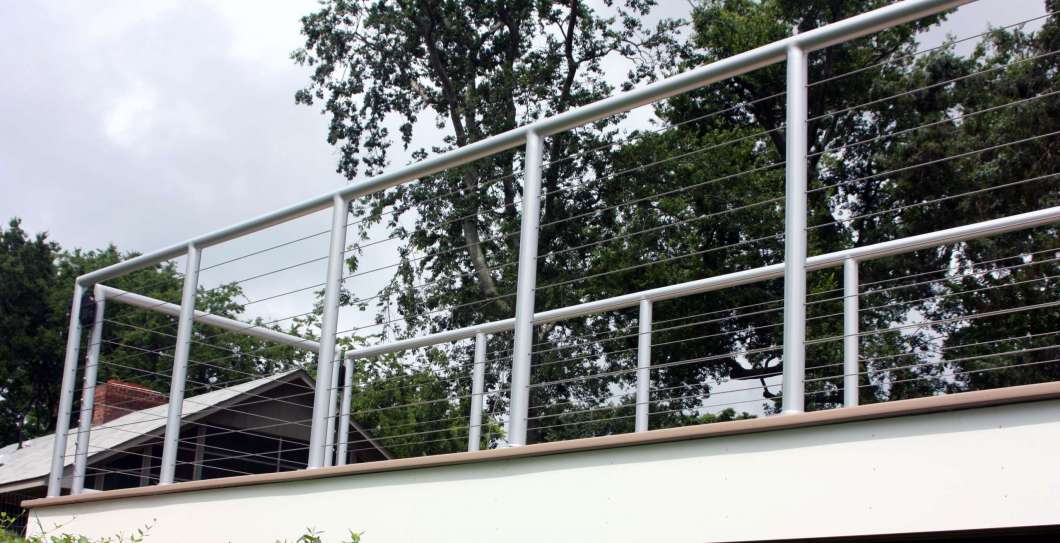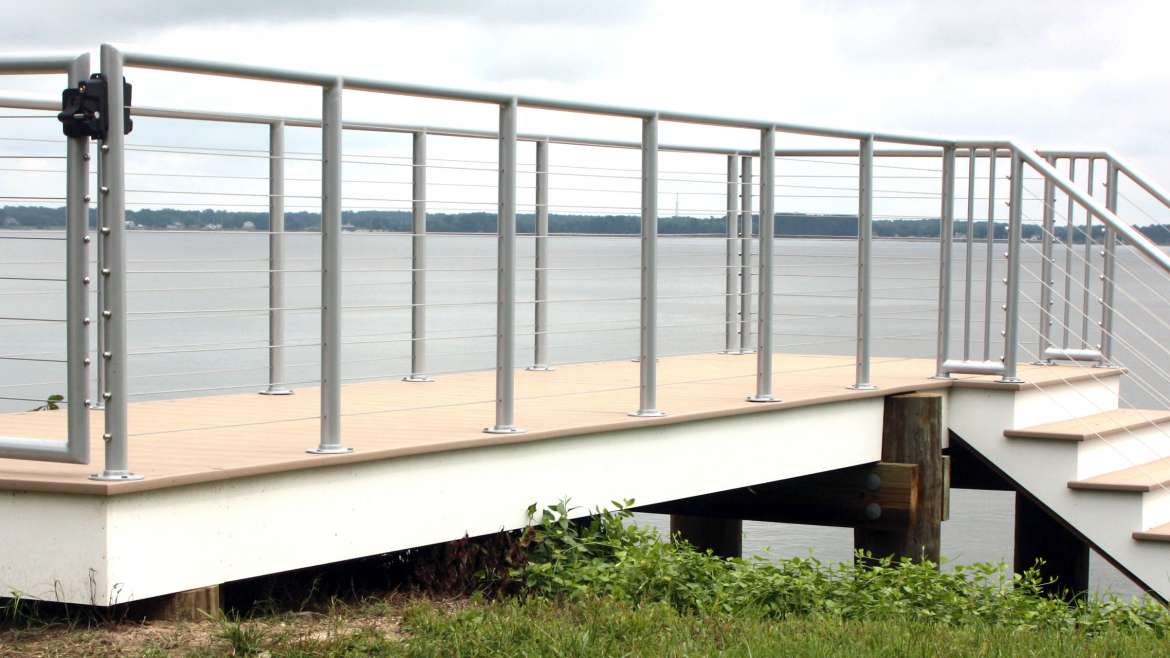Dock Cable Rail
able railing has become wildly popular in recent years. One of the greatest benefits of using a cable rail system lies in its ability to preserve views. It tends to fade into the background and virtually disappear. Unlike glass railing, cables won’t fog up or soil the way a glass windshield will. They don’t need even periodic cleaning to see through.

Cable Railing Design
This cable rail has 1/8 diameter stainless steel cables and a 1-1/2 diameter aluminum pipe frame with silver powder coated finish that closely mimics the look of stainless steel without the high price tag.
Cable rail takes a lot of time and thought to design. When we work in 1/16 inch tolerances, there isn’t much room for error. Everything from proper heights and angles of the cable holes on step rails – they are different dimensions on the front and back of step posts – to locating posts at corners to prevent overly wide gaps or foot plate overlaps must be carefully calculated and checked.

Design Factors
Cable doesn’t do well at corners. When we torque the cable terminals down, it tends to bind at corners so that it’s tight in one direction but loose after the miter. Because of that property, we build all of our cable runs in straight lines and begin new runs at turns or miters.

Stainless Steel Cable
CRS only uses stainless steel hardware on our exterior installations. This effectively eliminates the most prevalent point of failure in a railing system — connections that rust away. Even as long as the run in the picture above is, the rail is very stable.

Cable railing is the best option available for preserving views.

Cable post spacing has to be closer than with traditional pickets to compensate for stretching in the cables. Two adjacent cables cannot stretch apart more than 4-3/8″ under a specific force.

